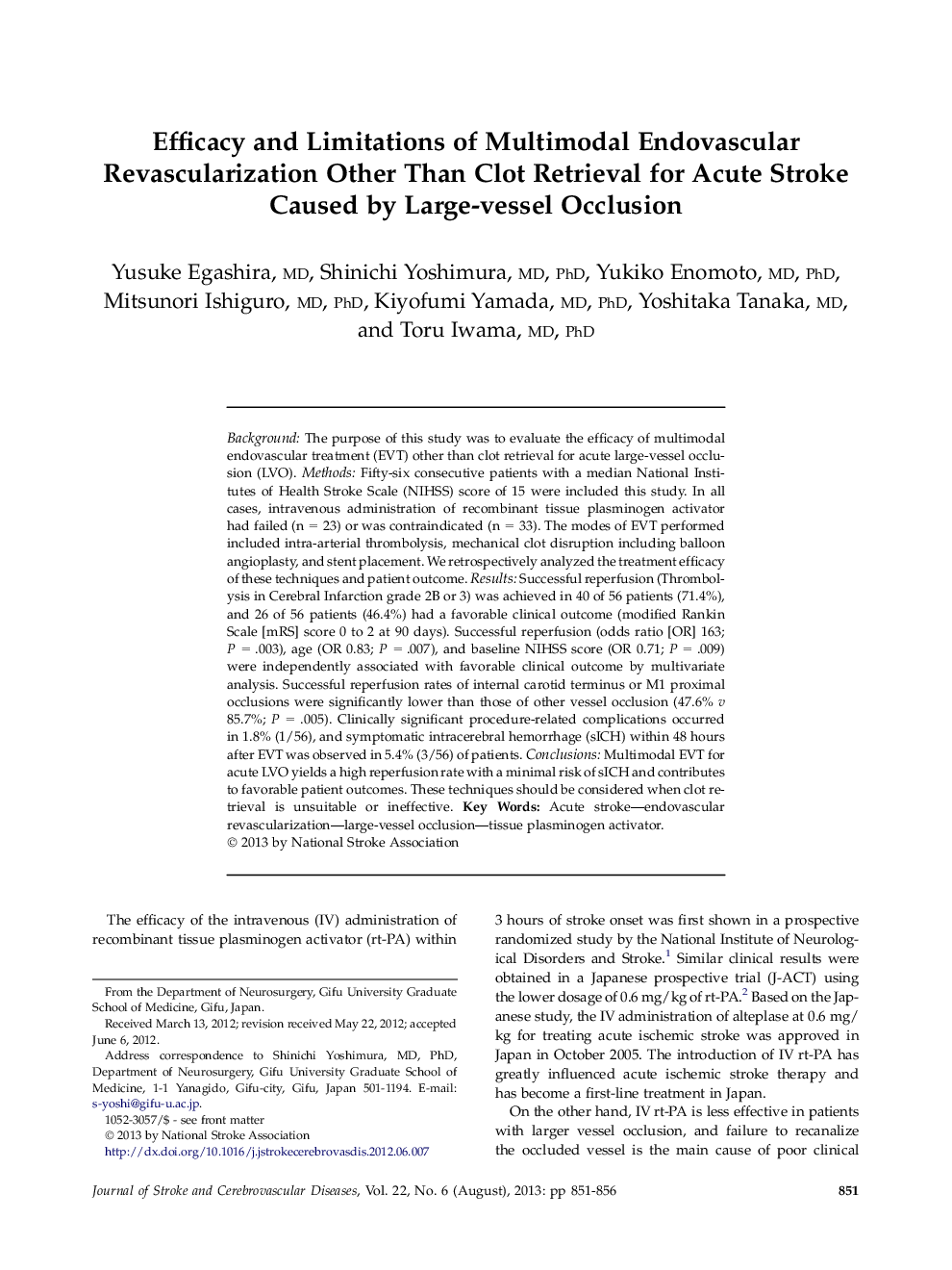| Article ID | Journal | Published Year | Pages | File Type |
|---|---|---|---|---|
| 2706345 | Journal of Stroke and Cerebrovascular Diseases | 2013 | 6 Pages |
BackgroundThe purpose of this study was to evaluate the efficacy of multimodal endovascular treatment (EVT) other than clot retrieval for acute large-vessel occlusion (LVO).MethodsFifty-six consecutive patients with a median National Institutes of Health Stroke Scale (NIHSS) score of 15 were included this study. In all cases, intravenous administration of recombinant tissue plasminogen activator had failed (n = 23) or was contraindicated (n = 33). The modes of EVT performed included intra-arterial thrombolysis, mechanical clot disruption including balloon angioplasty, and stent placement. We retrospectively analyzed the treatment efficacy of these techniques and patient outcome.ResultsSuccessful reperfusion (Thrombolysis in Cerebral Infarction grade 2B or 3) was achieved in 40 of 56 patients (71.4%), and 26 of 56 patients (46.4%) had a favorable clinical outcome (modified Rankin Scale [mRS] score 0 to 2 at 90 days). Successful reperfusion (odds ratio [OR] 163; P = .003), age (OR 0.83; P = .007), and baseline NIHSS score (OR 0.71; P = .009) were independently associated with favorable clinical outcome by multivariate analysis. Successful reperfusion rates of internal carotid terminus or M1 proximal occlusions were significantly lower than those of other vessel occlusion (47.6% v 85.7%; P = .005). Clinically significant procedure-related complications occurred in 1.8% (1/56), and symptomatic intracerebral hemorrhage (sICH) within 48 hours after EVT was observed in 5.4% (3/56) of patients.ConclusionsMultimodal EVT for acute LVO yields a high reperfusion rate with a minimal risk of sICH and contributes to favorable patient outcomes. These techniques should be considered when clot retrieval is unsuitable or ineffective.
